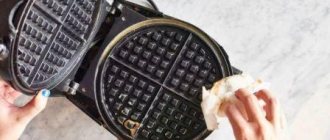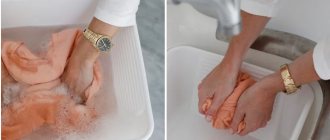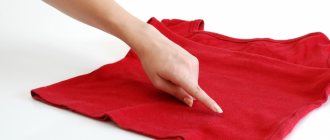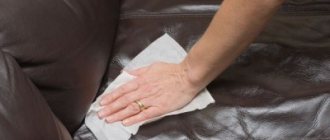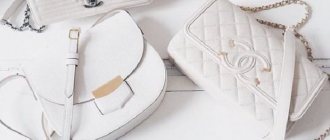The unpleasant situation when skate blades become covered with a coating of rust requires an immediate solution.
Rust not only looks unattractive, but also interferes with sliding. Ultimately, if nothing is done, the blades become unusable.
You can cope with plaque using special products and home recipes. We will tell you in this article how and how to remove rust from skate blades.
Features of removal from various tissues
Removing traces of corrosion from fabric must be carried out not only taking into account the degree of contamination, but also taking into account the quality and color of the material.
In order not to damage the structure of the fibers and maintain the shade, you should choose the right cleaner: Black fabrics
The presence of dark pigment requires careful use of potent agents. Such things are treated with glycerin compounds, toothpaste, diluted vinegar
The use of bleach and strong acids is unacceptable.
Colored products. Clothing with a pattern belongs to the “complex” group. Many bleaches can worsen the color, so choose only those products that are gentle. Recipes with vinegar, glycerin, and toothpaste are suitable for colored ones. Colored items should not be left in the sun and treated with whiteness.
White linen. If the light-colored fabric is of natural origin (cotton, linen, viscose), then chlorine-containing or acid bleaches can be used to clean it. Citric and oxalic acids are allowed as home remedies.
Jeans. The thick fabric from which jeans are made is difficult to clean. To remove rust marks, use products with good penetrating ability. Vinegar, citric acid, and household chemicals are suitable.
Synthetics. Thin fabrics made from artificial fibers are sensitive to strong reagents. It is recommended to clean them using universal liquids or mixtures based on glycerin, vinegar, and citric acid.
Cotton, linen. Natural fabrics withstand organic acids (citric, oxalic, acetic). Household chemicals intended for these fabrics are also suitable.
Silk, satin. Delicate tissues do not tolerate aggressive substances and strong mechanical stress in the form of friction. To clean them, neutral, mild-acting compounds are used.
Delicate fabrics are especially sensitive to many chemicals, so it is better to take an expensive item to the dry cleaner.
When and why should you clean?
You need to clean the calipers from rust as it appears. You need to start the procedure as soon as the first signs of corrosion appear.
What you need to pay attention to:
- discrepancy between the brakes of 2 wheels by 20% or more;
- the appearance of squeaking during braking;
- car skidding when pressing the brake;
- the appearance of vibration when braking.
If you ignore rust, the caliper will jam, which will affect speed and braking power. As a result, the system will begin to overheat and fail.
Therefore, preventive cleaning is carried out at least once a year, as well as every time the brake pads are replaced.
Experts recommend cleaning calipers regularly. This will allow you to detect and correct faults in a timely manner, for example, a broken piston boot or deformed brake discs.
Wash and clean
- A carbon steel knife needs special care, otherwise it will very easily lose color and begin to rust.
- After using the knife, be sure to dry it!
- Anything that contains acid will etch and darken the blade. This will happen in a very short time, so get into the habit of cleaning your knife after every use.
- Never store a knife while wet.
- To prevent the cutting edge from touching anything, store knives upside down.
And in order for a metal object to last longer, it must be properly cared for and, if possible, coated with special anti-rust compounds. This principle absolutely also applies to knife blades. Unless it's stainless steel.
How to store skates?
So we figured out how to remove rust from skates. Finally, I would like to say a few words about storing such equipment. To avoid damage to the blades, it is recommended to use special protective covers. You can purchase such runner covers at almost every sporting goods store. The ideal solution is to buy several pairs of cases. We are talking about hard plastic and soft rubber pads. The former will serve to maintain the sharpness of the blades when moving from the locker room to the rink. In turn, rubber adjustments will be used when transporting skates and storing them in the off-season.
Covers directly for boots look like a useful accessory. With their help, you can protect the material from mechanical damage and moisture, be it leather or a synthetic base.
After the end of the season, figure skates must be lubricated with plenty of shoe polish. This is the only way the boots will be able to survive the spring-summer period, remaining in perfect order. An alternative is to use regular Vaseline. When sending skates for storage, it is recommended to fill the shoes tightly with fabric or paper. The solution will help avoid the appearance of creases and cracks on the surface of products.
What about skate runners? The blades of the equipment should be treated with machine oil, and then the same protective linings should be applied to them. Finally, you should completely wrap the skates in newspapers and then put them in a dry, dark closet. By resorting to the above actions, you will not have to worry that when the next season arrives, your inventory will be in poor condition.
Skate care after skating
Failure to follow proper care instructions will quickly lead to rust. Immediately after skating, it is necessary to remove snow and moisture from the mounting bolts and the blades themselves. Then wipe them with a cloth. Having completed these steps, the equipment is placed in a bag; you must first put on covers or wrap it in a rag. Upon arrival home, it is recommended to lay out the skates for better ventilation.
In order for them to always remain stable, the blades require timely sharpening. It is better to do this by professionals, otherwise the amateur risks being seriously injured and damaging the runners. You can tell when it’s time to take your skates to be sharpened by the blades slipping during a push and breaking off when turning.
Important! In general, skates are sharpened at almost the same period of time. If you sharpen them frequently, this will lead to wear of the runners. And, conversely, too infrequent a procedure will harm the quality of gliding.
The blades are very easy to dull because the steel on them is extremely thin. It is important to always use hard covers when you need to leave the ice. At the same time, you should walk in them on rubber-coated floors. When crossing thresholds, you must try not to catch the blades on the steel plates, because the sharpening may deteriorate. With prolonged riding, the fasteners become loose and need tightening. It is important not to overtighten them, as the soles may become damaged. And under-tightened screws mean unsafe riding.
Rust removal
How to clean rust from skate blades? An effective solution here is to use a product based on lemon juice. It is enough to take one lemon and then grind its pulp. Next, all that remains is to strain the juice through a piece of gauze, a fine strainer or a piece of loose fabric.
The liquid obtained from lemon must be combined in approximately equal proportions with baking soda. The resulting slurry should be rubbed with a cloth into the places where rust has formed on the figure skates. You need to perform smooth movements, but with some pressure. It is worth continuing the procedure until the rust is completely gone. After finishing the work, you should remove the remaining slurry from the runners and rinse the blades with water. Then you need to dry the skates thoroughly.
Sulfuric or hydrochloric acid
- Peel the onion and grate it. Can be ground in a blender.
- Place on cheesecloth and squeeze out the juice.
- Pour the juice onto the knife, the rust on the blade will soften within an hour.
- Rinse the knife in water and wipe off any remaining rust with a regular kitchen hedgehog.
To remove rust with vinegar, soak it for several hours. If it is not possible to clean the tool in this way due to its large size, then either fill the knife with the substance and leave it for a day, or wrap it in a well-soaked cloth for a while.
Blade polishing
The skate runners, cleaned of dirt and rust, must be thoroughly polished. For these purposes, it is worth using a piece of soft fabric. Polishing will remove roughness that is barely noticeable to the eye from the metal surface. It is in them that moisture can accumulate, which will lead to the formation of a new layer of rusty plaque. Polishing the skate runners is enough for a few minutes. Thus, the desired result will be achieved. If desired, you can use special products for polishing runners, which are sold in sporting goods stores.
Fastener Maintenance
The skate runners are connected to the boot soles with screws. During the operation of the equipment, such fasteners will certainly weaken and become loose. To avoid problems while riding, the screws should be tightened periodically. You shouldn't twist them too tightly. After all, if you overdo it, you can cause delamination of the sole. The screws must be tightened tightly enough to ensure a secure connection between the runners and the sole. Regular maintenance of the fasteners will help avoid accidental injuries while riding.
Rules for removing old rust from a sink
Old, ingrained rust stains are a serious problem. It is not so easy to remove them, but effective methods exist. They vary depending on what material the sink is made of.
Method for ceramic sinks
Ceramic or earthenware sinks have a smooth, hard surface that is more resistant to external mechanical damage and chemical reactions than enameled ones.
To clean ceramics from old rust stains, you can use the whole range of existing methods, but the most effective way to remove old rust from a ceramic sink is to soak the stain with a 9% vinegar solution. As a rule, it can be found in any household. Procedure:
- It is necessary to wet a cloth with white vinegar, apply it to the contaminated surface and leave to act for half an hour to an hour.
- After this time, the sink should be thoroughly washed with running water.
Using Alternative Methods
When fighting rust, sometimes the most unexpected things are used, for example, Alka-Seltzer or aspirin. Several tablets are dissolved in a small amount of water and a knife blade is dipped into the solution for a quarter of an hour, after which the surface is wiped with a rough cloth and the knife is treated, as in all other cases, in order to protect it from subsequent damage.
What to do with a rusty object and how to remove stains from it, what method to use for this is up to the owner of the knife to decide. Buying a ready-made product is perhaps the safest option, but it’s still worth experimenting with alternative methods, especially if the case is not too advanced. The main thing after this is to prevent rust stains from appearing again, since some of them can be difficult to remove. In this matter, prevention is everything.
Useful tips for removing rust from clothes
There are several rules that must be followed in order to save an item from rust stains with minimal losses. They are as follows:
- Stains must be removed as soon as they appear on the fabric. A new stain is much easier to remove than an old one.
- The rust is first removed from the fabric, and then the item is washed. The reverse process may worsen the situation.
- It is not recommended to remove rust from clothes. It is best to remove it with a vacuum cleaner.
- If you decide to use acids or ammonia, first open the windows in the room. Try to keep small children and pets away from the room.
- Be sure to wear gloves to protect the skin of your hands from the harmful effects of the compounds used.
- The bleaches purchased should not contain chlorine. Its presence can aggravate the situation, since the rust will not only not go away, it will eat into the fabric, making it impossible to completely clean it. The damaged item will have to be thrown away.
- After each wash, you need to carefully check the drum for metal objects that have fallen out of your pockets. They can subsequently cause rust stains to appear on clean things.
- Before starting the cleaning procedure, you should first test the composition on an area of the fabric that is invisible.
- It is necessary to apply the composition only from the wrong side of the fabric.
- If the methods you have tried to remove rust from things have not yielded positive results, you should seek help from specialists by visiting a dry cleaner. This will require significant costs, but you will be pleased with the results.
How do we care for curved blades?
The blades in skates are at the same time the most durable and, at the same time, the most sensitive element. Simple but important rules of care will allow you to keep them in good condition as much as possible.
- Like boots, the blades must be wiped with a dry and soft cloth after each ride! A dry blade is the key to the absence of corrosion;
- Be sure to wear covers when walking outside the ice surface: concrete or floor tiles spoil sharpening and sometimes lead to the need to purchase new blades;
- After training, soft covers are also put on during the journey from the ice arena to home to eliminate excess moisture, which usually appears from temperature changes.
It is recommended to use 2 types of covers: hard ones for walking and soft ones for absorbing moisture after riding.
In our store, multi-colored plastic cases are available for purchase, as well as original soft ones in the shape of animals from the Italian brand EDEA.
Plastic cases are available in different colors: plain and with glitter.
- Store and carry skates also in cases: the blades can scratch against each other, cut your shoe and other things;
- For sharpening, you need to contact specialized workshops where there is appropriate equipment and specialists know how to work with it. Professional blades are not sharpened in metal repair shops and other non-core places. And saving on high-quality sharpening is fraught with irreparable damage!
Every skater should take these rules as a daily habit, then the skates will “reach” with you until the end of the season unharmed.
Skates and accessories for figure skaters in Minsk
You can consult and select the necessary accessories or a complete skater’s kit by calling +375 29 164 18 88 or in our store in Minsk (K. Liebknecht St., 127, office 69).
Out-of-stock EDEA brand models are available upon pre-order, indicating the exact model and size (for boots and blades) and color (for covers).
We provide our skaters with the best equipment for the best results!
Cleaning Rules
There are two ways to get rid of corrosion. The first is to remove the part and clean it, and the second is to remove oxides without disassembling the brake system. You can cope with corrosion using improvised means and with the help of specialized compounds.
How to clean the removed ones?
To remove oxides from removed parts, you can use folk remedies. The easiest and cheapest way to remove plaque is to use vinegar. Acid is an excellent rust dissolver.
Procedure:
- Remove the caliper from the car.
- Pour warm water into a bucket and dissolve 9% vinegar in it. For 10 liters of water you will need 0.3-0.5 liters of acid. The larger the layer of rust, the more concentrated the solution should be.
- Remove loose rust using sandpaper.
- Immerse the part in the solution.
- After 15-30 minutes, remove it and inspect it. If the rust has not come off, then the product is soaked for another 1-2 hours.
- After cleaning is completed, the caliper is rinsed with water, dried and treated with any anti-corrosion compound.
By analogy with vinegar, citric acid is used. For 10 liters, 2 sachets of powder, 80 g each, are enough.
Another way to get rid of rust on calipers is to soak them in sparkling water. Coca-Cola, which contains phosphoric acid, is suitable for this purpose.
Procedure:
- fill a plastic bowl with sparkling water;
- completely immerse the part in the drink;
- leave for 12 hours;
- Remove the caliper, rinse with clean water and dry.
Cola allows you to cope with even a thick layer of rust, but for this the exposure time needs to be doubled.
How to remove corrosion without removing the part?
If you do not plan to remove the calipers, then it will be more convenient to use a professional rust remover in the form of a spray. Top 3 store products:
- Rust Remover 0.5 l. The spray is sprayed over the surface of the part. After the chemical reaction is completed, a film is formed on the metal that will protect it from rust. The price of the composition is 250 rubles.
- Autoprofi converter.
The product is sprayed onto the part, left for 15 minutes, the resulting layer is cleaned off with a rag and the procedure is repeated again. After the reaction is complete, the surface is treated with a non-metallic brush with stiff bristles. Price - 225 rubles. - Hi-Gear converter. It is applied to metal that has been stripped of rust, left for 20 minutes, rubbed with a non-metallic brush, after which the procedure is repeated 1-2 more times. There is no need to rinse off the composition. Price - 400 rub.
All of the above products not only clean the calipers from rust, but also prevent its reappearance, as they form a protective film on the metal.
Loctite
The Loctite helium converter is very popular among avid hunters. It removes rust quickly without damaging the varnish.
If the rust has managed to eat in and form “sinks” in the body of the knife, you should forget about preserving the varnish coating. “Sinks” are cleaned mechanically, using a grinding machine or sandpaper.
To clean carbon steel and stainless steel knives, CIF cleaning gel or spray is excellent. The traditional use of the product is to combat heat-treated dirt or limescale. Rust on a knife is also affected by the components included in its composition.
Apply the spray to the surface of the blade and wipe off the knife, along with the loose flakes of rust, with a coarse cloth. Cover the blade with a 0.5 mm layer of gel using a toothbrush and rub into the surface. Remove with a dry cloth after 10 minutes. Polish with oiled flannel.
Newly discovered rust, often in the form of dots, can be easily removed with ash from a fire. Very convenient in hiking conditions.
Dilute the ash with a few drops of water and rub the blade. You can just use your fingers. Wipe the knife with a dry cloth.
Prevention of corrosion
To ensure that, after removing corrosion, it does not reappear on the engine, it is necessary to ensure reliable protection of the treated area.
For this, special compounds are used, for example, Litol-24. This versatile lubricant prevents metal oxidation. It stays on the surface for a long time, which is possible thanks to its excellent adhesion.
Litol-24 is impervious to moisture, even boiling water. This composition costs about 100 rubles per 400 g. After using it, the room will remain clean for 3 months to a year. The exact timing depends on the conditions in which the vehicle is operated.
In addition to Litol, you can cover the engine number with heat-resistant varnish. It will protect it from moisture and rust formation. The only obstacle when inspecting the engine will be dust settled on its surface, which can be easily removed with a damp cloth.
Zinc chloride
- After each ride, the boot is wiped dry inside and out with a soft cloth that can absorb moisture well;
- The boot must dry before packing the skates in cases and bags (for example, overnight or longer);
- Proper drying of the boot: unlace well, release the tongues, dry the insoles and inner cushions at room temperature with air humidity up to 70%.
- Drying on conventional batteries is strictly prohibited!
- It is recommended to periodically use a special water-repellent impregnation for boots;
- If you plan to take a long break from skating and the skates will not be used, a special cream is usually applied to the boot and the skates are put away in a place with good ventilation;
- Laces and hooks should be periodically inspected for damage and, if necessary, replaced immediately.
Rust on metal can ruin even the most beautiful product. There are different ways to clean rust. The choice depends on the degree of surface damage. At the initial stage, you can clean the surface with a wire brush. Sometimes this is enough. If the rust has set in or you don’t want scratches to remain on the product, you need to resort to more effective methods.
How to remove: the best removal products
To remove rust from an engine, you can use only those compounds that do not harm the metal. Aggressive chemistry is abandoned.
Brake fluid
Every driver has brake fluid in their car. With its help, you can quickly and safely remove rust from the engine.
Features of the procedure:
- Apply the product to the area marked with the number.
- Take an old toothbrush and scrub the treated surface.
- Moisten a cloth with clean water and wipe the affected area with it.
You cannot use a brush with coarser bristles, so as not to damage the number.
Coca Cola
Coca-Cola is not only a popular carbonated drink, but also an effective rust inhibitor. Carbonated water contains orthophosphoric acid (in low concentration), which helps clean metal from corrosion.
Use soda as follows:
- soak a sponge or small piece of cloth with Cola;
- apply the cloth to the area of the engine on which the number is applied;
- leave the material for half an hour, after which it is removed;
- Wipe the engine with a clean damp cloth.
Thanks to this treatment, the rust will be completely removed, and identifying the number will not be difficult. Read more about the use of Coca-Cola in the fight against rust here.
Orthophosphoric acid
Phosphoric acid quickly removes rust. It works within a few minutes.
Mode of application:
- apply phosphoric acid solution to the engine;
- leave for 10 minutes;
- remove the product with a damp flannel cloth.
To completely remove the acid, you can use a solution of laundry soap. You may need to wipe the area several times to completely clean it. Read more about the use of phosphoric acid against rust here.
To combat corrosion, a low concentration of acid is used - no higher than 7-10%.
Lemon acid
You can get rid of corrosion on the engine using citric acid. Use it as follows:
- prepare a cleaning agent - dissolve 5 g of powder in a liter of warm water and mix thoroughly;
- moisten the cloth in the resulting composition and use it to wipe the problem area;
- if the rust does not come off well, then the cloth can be left on the surface of the engine for 15 minutes;
- After cleaning is completed, the number is wiped with a clean damp cloth.
Instead of citric acid solution, you can use lemon juice. You can read more about the method in this article.
Converter
A rust converter is a compound that converts iron oxides into a protective layer. As a result, two effects are achieved at once: rust dissolves, and the metal surface will be protected from its reappearance in the future.
Procedure:
- Use a toothbrush to remove dust and the top corroded layer.
- Shake the bottle with the converter.
- Apply the product to the area where the number is located.
- Wait for the composition to dry. The exact time of its exposure on the metal is indicated on the packaging with the selected product.
- Remove the formed film with a toothbrush.
- Rinse the area with plenty of water and wipe with a dry flannel cloth.
You need to work with the converter carefully and quickly. Before using the composition, you need to read the instructions
You cannot keep it on the surface of the engine.
Cillit
You can get rid of rust on the engine using household chemicals. The hardware department of any store sells Cillit to combat limescale and rust. It contains non-ionic surfactants and acids, thanks to which it is possible to achieve the desired effect.
Mode of application:
- Apply a small amount of product to a damp sponge or to the surface of the engine.
- Distribute the composition over the area that needs treatment.
- Leave the product to act for 2-5 minutes.
- Rinse off Silit with water and wipe dry with a soft cloth.
The composition can cause irritation to the skin and mucous membranes, so it must be used with caution
How to clean rust from scissors
- Mix one part detergent with one part vinegar and apply the mixture to the blade with a soft cloth. Then rinse off the solution and dry the knife.
- For stubborn rust stains, soak the blade in the solution for an hour. Then remove the knife and wash it under running water. Dry the blade with a clean, dry towel.
To clean carbon steel and stainless steel knives, CIF cleaning gel or spray is excellent. The traditional use of the product is to combat heat-treated dirt or limescale. Rust on a knife is also affected by the components included in its composition.
Mechanical cleaning to restore original appearance
You can get rid of rust on tools mechanically. For this use:
- Hand brushes with metal bristles. They differ in the stiffness of the bristles and the way they are attached to the handle.
- Mechanical brushes with pneumatic drive. This method may seem easy to use at first glance, but working with automatic brushes is quite difficult, since you have to process small parts. During the procedure, a lot of fine metal dust is generated indoors, so the respiratory system must be protected with a respirator.
- Aluminum foil soaked in vinegar or other acid.
- Sandblasting machines. With their help, you can clean the tool in a few seconds. Moreover, the thickness of the corrosion does not matter.
Regardless of the selected device, the procedure does not change. General instructions for using the tools:
- Before cleaning, the tool must be securely fixed - the optimal setting for this purpose is a vice;
- The surface should be rubbed evenly, controlling the pressing force;
- movements should be circular;
- The stiffer the brush, the less time the procedure takes.
When working with any tool, your hands should be protected with gloves, and your face and eyes with a mask.
How to remove corrosion from skates
If, after carrying out all of the above procedures, it was not possible to rid the blades of ingrained rust, then you can resort to grinding. But in order not to spoil your equipment, it is better to turn to the services of specialists and have your skates sharpened. The workshop will carry out all the necessary procedures for effectively cleaning rust using professional equipment, followed by grinding, polishing and sharpening.
Methods for effectively cleaning metal from rust
How to clean skates from rust in a more effective way? You can get rid of corrosion not only with improvised and chemical means, but also with mechanical impact on the blades. Mechanical processing of skates involves the following activities:
- deburring;
- grinding;
- removal of surface corrosion;
- edge sharpening;
- surface polishing.
These procedures can be performed manually, using abrasive materials (sandpaper, polishing stone), as well as on mechanical machines that can increase productivity. But mechanical grinding will allow you to remove only the top layer, and will not be able to stop the further spread of the chemical effect on the deep structures of the metal. Polishing is used as an additional protective agent for skate blades.
https://youtube.com/watch?v=QDPchQVWmGw%3F
Blade polishing
If the owner of winter equipment wants to protect his skate blades for a long time, then it is better to polish them. This procedure helps to remove subtle roughness from surfaces and create a protective layer with the penetration of the polishing compound into the scratches.
Sequencing:
- clean the metal from dirt;
- dry;
- remove rust using any available method;
- Polish the surface for 5 minutes.
For polishing, use a soft cloth and polishing compound. These can be various means:
- petrolatum;
- machine oil;
- polishing pastes (GOI, GROBET, Doctor Wax);
- any gels and polishes for metal sold in sporting goods stores.
Lace care
Proper maintenance of winter equipment involves not only taking care of your boots, but also your laces. They are the ones that can provoke rusting, since after using the boots, the laces retain moisture for a long time. The best option is to unlace your boots and dry the laces after each ride. Rarely does anyone resort to such measures, but it is recommended to dry boots unlaced when the equipment is put away for storage until the next season.
Requirements for laces during operation:
- laces must be kept in proper condition, as they can withstand significant loads;
- at the slightest suspicion that this piece of equipment may break, it must be replaced;
- It is recommended to have a spare pair of laces during important performances;
- After each ride, the laces are wet, so when leaving the boots to dry, you need to make sure that the wet ends of the laces do not create moisture on the metal surfaces.
https://youtube.com/watch?v=FzsUwdd-EpE%3F
Storing skates after treatment
Important! In order not to think about how to clean skates from rust, they must be handled with care after each use. After all, boots, laces, fasteners and blades must be carefully looked after.
Boots can be made of any material, be it artificial or genuine leather or synthetics. They should dry well after riding. But they cannot be placed on radiators or other hot surfaces. Otherwise, it will ruin the boots once and for all. It is best to thoroughly wipe them with a cloth after leaving the skating rink. Then, when you get home, untie the laces, open them as much as possible and let them sit for a while. This will allow excess moisture to evaporate from the inner surfaces of the shoes. Next, it is recommended to hang the equipment in the hallway away from heat sources or put it in a closet.
If you plan not to use skates for a long time, then the boots are lubricated with shoe polish or Vaseline, and paper is stuffed inside to maintain their shape and absorb excess moisture. Laces also need to be looked after. It is recommended to give preference to products made of durable nylon, because they are able to stretch well and fix the legs. Laces should be replaced with new ones in time and washed if they become dirty.
Cleaning knives with chemical reagents
Well, after trying some of the methods from popular recommendations, and if the result was not achieved, you can resort to the help of potent reagents. Most often, such methods are resorted to in case of severe corrosion damage.
These methods can also be called partly folk, but they can be quite effective. Such methods are much more aggressive and the result can be seen in a short period of time.
It is better to use them with rubber gloves and try not to inhale the fumes released. Let's try to describe three ways:
- Zinc chloride, potassium hydrogen tartrate. To perform this procedure, you will need 100 ml. water in which you need to dissolve 0.5 grams of potassium hydrogen tartrate and 5 grams of zinc chloride. When the reaction begins, lower the blade there and, as with the method using Alka Seltzer, wait for the reaction to complete, but in this case the knife will have to wait about 2-3 hours. Once the reaction is complete, remove the wedge and wipe dry with a cloth.
- Hydrochloric acid. When using such strong acids, by the way, instead of hydrochloric acid, you can use sulfuric acid. You need to be especially careful and attentive; special inhibitors are used with them to reduce the destructive effect on the metal. Otherwise, the blade will “eat” up to the hilt. The solution should be 5% acid and methenamine (0.5 grams per liter). Then the knife is treated with a brush or rag well soaked in this mixture.
- Alka seltzer. The drug for headaches after a stormy feast turns out to have other useful chemical properties. You will need 5 tablets of this drug. We lower them into the container, and then fill them with water, dip the rusty blade into it and keep it there until bubbles appear. As soon as the boiling process is over, remove it and remove any remaining dirt with a soft cloth.
Removing rust from a knife using chemicals.
Working with such chemical compounds yourself can be dangerous. It is unknown what reaction can occur if the proportions are mixed incorrectly. And where to get some of the reagents, you may not be able to find them in the public domain.
For this, various manufacturers of household chemicals have developed a whole line of rust removers.
Purifying iron using chemistry
To remove rust, converters and solvents are available and can be purchased at any hardware store. Almost all of them contain orthophosphoric or other acid, due to which they strongly corrode brown formations. These preparations form a protective film on the treated metal, preventing the reoccurrence of corrosion.
Converters and Purifiers
Before using them, the rusted surface must be cleaned with a metal brush or sandpaper. This is necessary to remove plaque, which forms red flakes and dust. Then you should degrease the area or element being treated using gasoline or solvent.
Then apply the converter using a brush and leave for a while - the duration depends on the degree of damage. When the reaction begins, a black or dark blue coating should appear. To remove it, after drying, the part or surface must be treated again with fine sandpaper.
Among the converters we can highlight Khimreaktiv, Blesk, Composite, Khimrezerv, Hanseline, Antikor-Super, Tsinkar.
Zinc chloride
Cleaning with this product will help get rid of rust marks. 50 g of chloride should be mixed with 5 g of potassium hydrogen tartrate. Then pour the mixture into a container and lower the items being processed into it. Leave for a while and then remove using tongs. If heavily soiled, wipe off the residue with a sliver. Rinse thoroughly with running water. This is a good option for cleaning bolts, nuts, chains and other small parts.
The ingredients of the composition are very aggressive, so you must work with rubber gloves, adhering to safety rules.
Sulfuric or hydrochloric acid
Before use, dilute 5 ml of the product in 100 ml of water. Add 0.5 g of methenamine per liter of solution. It is needed to reduce the strong acidic effect that can destroy iron. Treat the rusty surface with a brush, place small elements in a container with the product. Then dry thoroughly and apply a rust-protective agent.
Corrosion can be eliminated with another acid-based product. It is used if there is no methenamine. To do this, you will need potato peelings, which you need to place halfway in a three-liter jar. Pour acid there so that it completely covers the cleaning. Stir the mixture for 20 minutes until all components react, then strain.
Acid mixtures are suitable for cleaning various parts and tools. You can also use them to get rid of rust on your grill. But it is not recommended to clean knives, dishes, and jewelry with such aggressive compounds.
Lactic acid and petroleum jelly
To remove rust from coins and jewelry, you can use a composition containing these ingredients. You need to mix 100 g of Vaseline and 50 g of acid. Apply with a brush to the object to be treated. Remove the salt formed during the reaction with sandpaper or a toothbrush. Remove any remaining substance with a napkin or cloth soaked in Vaseline oil.
Do you believe in the benefits of visiting cosmetologists?
Not really
How to remove rust from a knife at home: 13 best cleaning methods
In 100 ml of water, 5 g of this substance is mixed with 0.5 g of cream of tartar. Under the influence of the acidic environment created by zinc chloride, rust will easily dissolve.
Expert opinion
Ksenia Diyanova, expert on beauty, purity, harmony
Ask me any questions, I will be happy to answer!
However, perhaps this is one of the few cases when caring for a thing is enjoyable and has a calming effect. Using soda paste, you can easily get rid of not only rusty deposits, but also blackness on antique knives. How to clean a knife from rust: folk remedies, chemical reagents, tips, care rules Ask me all your questions, I will be happy to answer!
Method 6. Stain remover
Before you begin removing stains, you should carefully read the instructions for using this product (it will be difficult to undo a mistake). Usually it is enough to apply a small amount of concentrate to the dirty area and let it soak in (10 minutes, some manufacturers recommend 15). Next, wipe the contaminated area with a clean cloth until the stain disappears. If necessary, repeat the procedure. The cleaned item can be machine washed.
Here are stain removers that will help you remove old rust stains. You can remove rust from colored clothes:
- "Vanish";
- Amway;
- "Ace";
- "Sarma";
- "Oxy";
- "Antipyatin."
Using Alternative Methods
When fighting rust, sometimes the most unexpected things are used, for example, Alka-Seltzer or aspirin. Several tablets are dissolved in a small amount of water and a knife blade is dipped into the solution for a quarter of an hour, after which the surface is wiped with a rough cloth and the knife is treated, as in all other cases, in order to protect it from subsequent damage.
We recommend: Unexpected top 5 dirty places in an apartment or house that has neither a toilet nor a trash can
What to do with a rusty object and how to remove stains from it, what method to use for this is up to the owner of the knife to decide. Buying a ready-made product is perhaps the safest option, but it’s still worth experimenting with alternative methods, especially if the case is not too advanced. The main thing after this is to prevent rust stains from appearing again, since some of them can be difficult to remove. In this matter, prevention is everything.
Baking soda based abrasive paste
Apply it evenly to the damaged area of the blade and leave for half an hour. To absorb the solution into the rye hearth. Then, carefully removing the paste, make several circular movements on this area with a sponge or an old toothbrush.
Expert opinion
Ekaterina Korneva, expert in the field of care, cleanliness and beauty
I will help you understand all the intricacies.
Bone, especially ivory, does not like sudden changes in temperature and humidity and there is a risk of cracks. The ability of rust to spread from one small focus over the entire surface is a primary problem. Measures to prevent corrosion If you have any questions, please contact me, I will be happy to answer!


